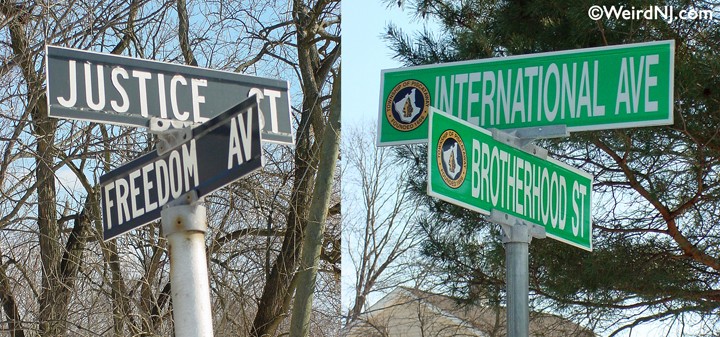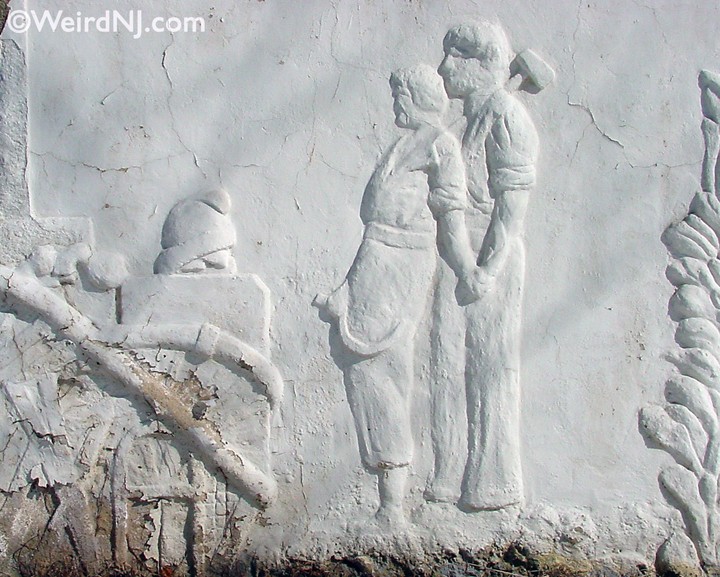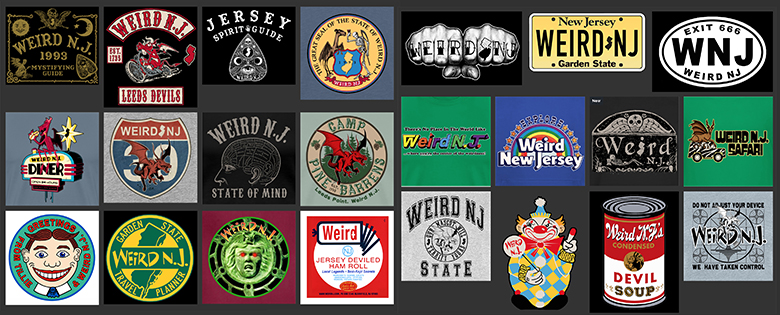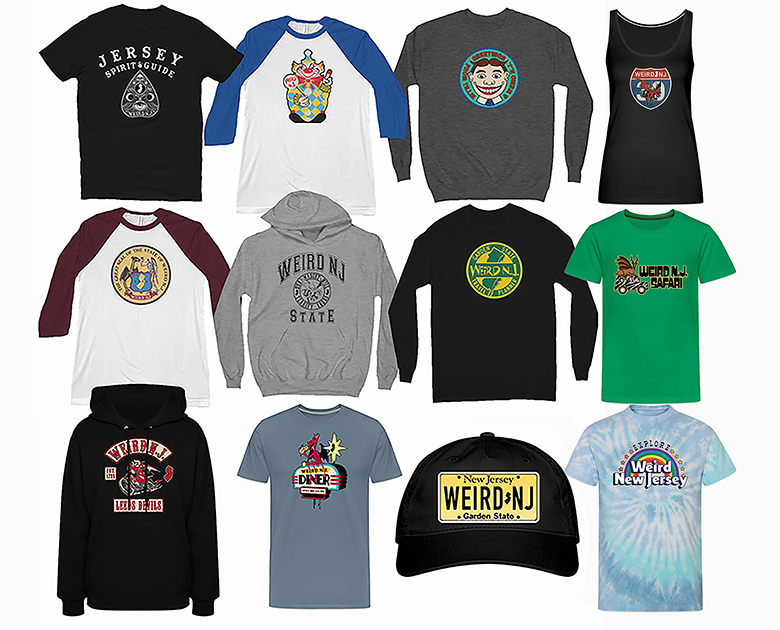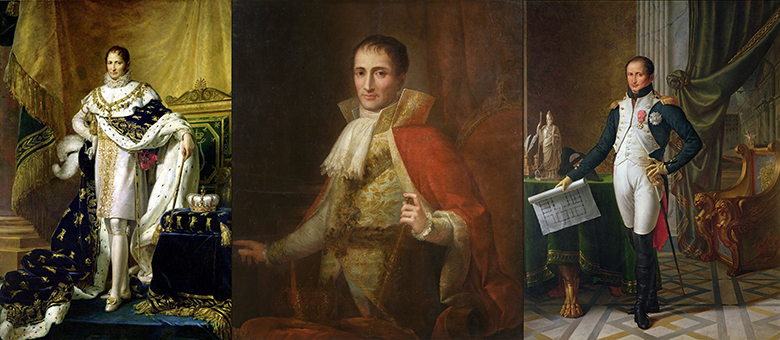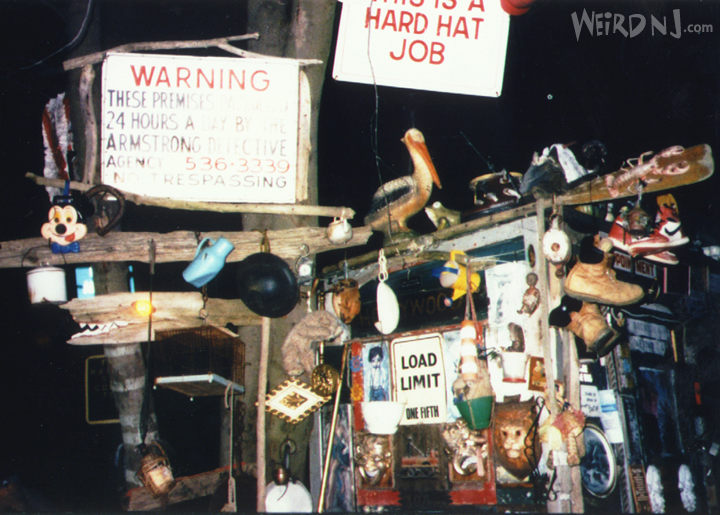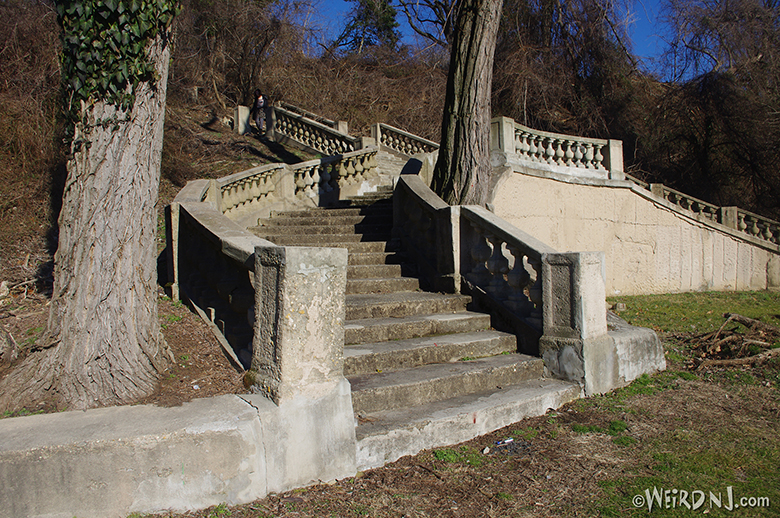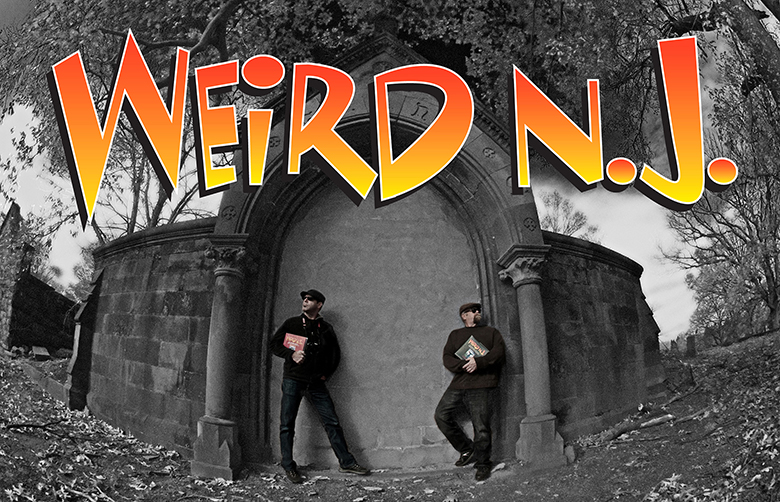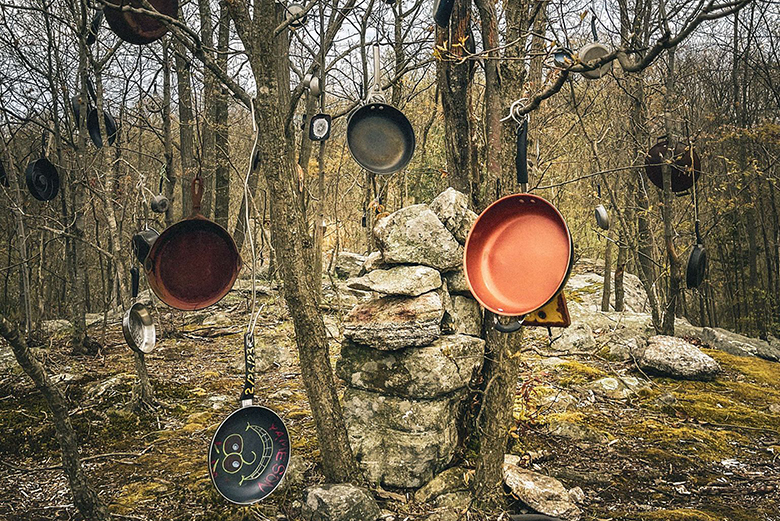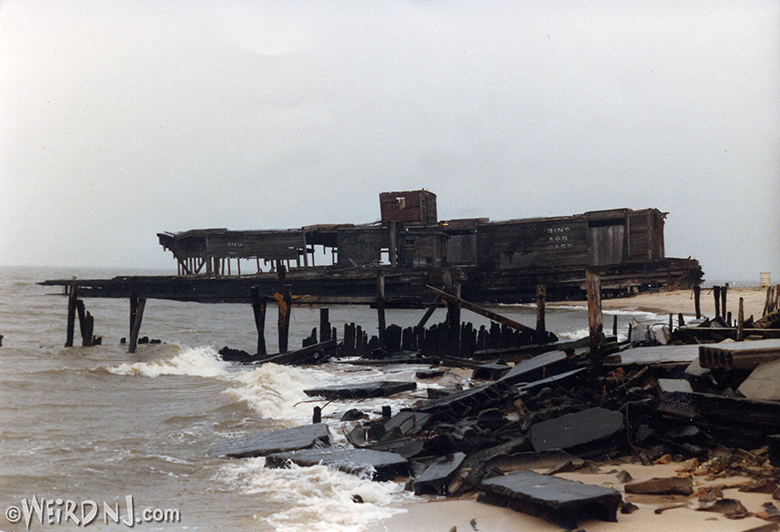UPDATE: Uncle Sam’s House In Jeopardy
Built in 1915 by Sam Goldman, the home is adorned with reliefs of Bolshevik symbolism, along with some abstract and oddly placed columns. The area surrounding the house was once a farm commune, established as a cooperative organization called Fellowship Farms. It was a utopian enterprise based on socialist-Marxist teachings, and Sam was one of the leaders of the movement.
Uncle’s Sam’s House: Anarchy in Piscataway
Located at 143 School St., in the North Stelton section of Piscataway, is a house that was the brainchild of Sam Goldman, a Russian born artist, musician, paper-hanger and follower of anarchist doctrines. Built in 1915 by Goldman, the home is adorned with reliefs of Bolshevik symbolism, along with some abstract and oddly placed columns. The area surrounding the house was once a farm commune, established as a cooperative organization called Fellowship Farms. It was a utopian enterprise based on socialist-Marxist teachings, and Sam was one of the leaders of the movement.
At its center was the Modern School, conducted along progressive lines by followers of the Spanish martyr-anarchist Francisco Ferrer. The school was built on land donated by the cooperative. The liberal thinking socialist founders in the area decided to give the streets names like “International Avenue,” “Brotherhood Street,” “Voltaire Street,” “Justice Street” and “Karl Marx Street” (later re-named Arlington Place by the capitalist bourgeois).In 1934 the group organized the Anarchist Federation of America, a group of theoretical, rather than practical, revolutionaries. “Sam was a hippie, a free spirit, a bohemian of the times,” said Sam’s 73-year-old niece. “What Sam wasn’t was an architect. The house was built without a level, and you could roll a marble from one end of the house to the other. I grew up here all my life and attended the Modern School. It was really something. You could learn whatever you wanted. You just told the teacher ‘I want to learn printing,’ and they taught you. The school had a newspaper, and some of the articles were written by four and five-year-old students–and they were very articulate.”
The house was constructed of wood with a plaster facade. The windows were made from shards of glass Sam had laying around the house. Rather than buy square panes, he constructed the frames to fit the glass, making each a one-of-a-kind work of art. 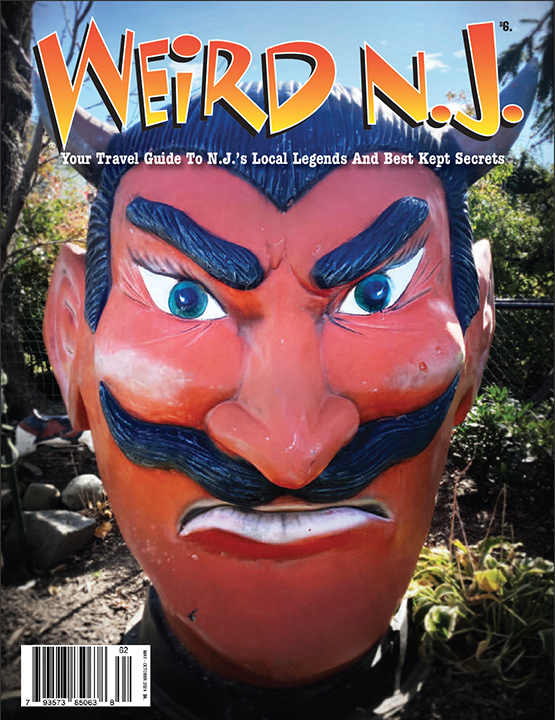 Sam’s niece had many memories of her eccentric uncle, and we asked her to describe the man behind the anarchist: “He had the uncanny ability to paint wood grain. He would spend hours painting the knots of the wood and the lines that go around it. They still remain on the trim inside the house. He also never bought a thing in his life. He would always barter. During the 1930s, our community, because of its beliefs, had a difficult time finding work. Sam and his brother were wallpaper hangers, and his brother was a master at it. Sam was sloppy, he had little interest in proletarian pursuits, and only did it to help make ends meet for his family. They would call him a ‘schmeerer,’ because of the way he sloppily hung the paper. He and his brother papered some buildings at the (Rutgers) University. They were always being mistaken for each other because they looked similar. He completed a full program at Cooper Union, but never received his diploma because he decided to go on a date that night (with his future bride).”
Sam’s niece had many memories of her eccentric uncle, and we asked her to describe the man behind the anarchist: “He had the uncanny ability to paint wood grain. He would spend hours painting the knots of the wood and the lines that go around it. They still remain on the trim inside the house. He also never bought a thing in his life. He would always barter. During the 1930s, our community, because of its beliefs, had a difficult time finding work. Sam and his brother were wallpaper hangers, and his brother was a master at it. Sam was sloppy, he had little interest in proletarian pursuits, and only did it to help make ends meet for his family. They would call him a ‘schmeerer,’ because of the way he sloppily hung the paper. He and his brother papered some buildings at the (Rutgers) University. They were always being mistaken for each other because they looked similar. He completed a full program at Cooper Union, but never received his diploma because he decided to go on a date that night (with his future bride).” 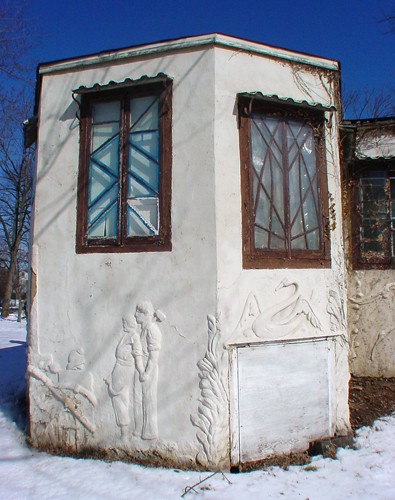
The Modern Schools, also called Ferrer Schools, were American schools established in the early 20th century. They were an important part of the anarchist, free schooling, socialist and labor movements in the United States, intended to educate the working-classes from a secular, class-conscious perspective. The Modern Schools imparted day-time academic classes for children, and night-time continuing-education lectures for adults. The first and most notable of the Modern Schools was founded in New York City in 1911.
The school used Montessori methods and equipment, and emphasized academic freedom rather than fixed subjects, such as spelling and arithmetic. The Modern School magazine originally began as a newsletter for parents, when the school was in New York City, printed with the manual printing press used in teaching printing as a profession. After moving to the Stelton Colony, New Jersey, the magazine’s content expanded to poetry, prose, art, and libertarian education articles. Acknowledging the urban danger to their school, the organizers bought 68 acres (275,000 m2) in Piscataway Township, NJ, and moved there in 1914, becoming the center of the Stelton Colony. In 1933, James and Nellie Dick, who earlier had been principals of the Stelton Modern School, founded the Modern School in Lakewood, NJ which survived the original Modern School, the Ferrer Center, becoming the final surviving such school, lasting until 1958.
We were shown the spot where the Modern School once stood, now nothing more than weeds and an old foundation. The “Uncle Sam House,” as it is known by the family, is still owned by Sam’s son, and is rented out to students of Rutgers University. Although the flat-roofed building has seen better days, the anarchist reliefs Sam had sculpted still inspire free-spirited thinkers when they ride through the now-bourgeoisie neighborhood. Seeing this house is well worth the ride down School Street. You have nothing to lose comrade, but your chains.
 The preceding article is an excerpt from Weird NJ magazine, “Your Travel Guide to New Jersey’s Local Legends and Best Kept Secrets,” is available on newsstands throughout the state and on the web at www.WeirdNJ.com. All contents ©Weird NJ and may not be reproduced by any means without permission.
The preceding article is an excerpt from Weird NJ magazine, “Your Travel Guide to New Jersey’s Local Legends and Best Kept Secrets,” is available on newsstands throughout the state and on the web at www.WeirdNJ.com. All contents ©Weird NJ and may not be reproduced by any means without permission.
Visit our SHOP for all of your Weird NJ needs: Magazines, Books, Posters, Shirts, Patches, Stickers, Magnets, Air Fresheners. Show the world your Jersey pride some of our Jersey-centric goodies!
Now you can have all of your favorite designs from the past on all kinds of cool new Weird Wear: Men’s Wear, Women’s Wear, Kids, Tee Shirts, Sweatshirts, Long Sleeve Tees, Hoodies, Tanks Tops, Tie Dyes, Hats, and accessories like Mugs, Backpacks, Stickers, Buttons and more! All are available in all sizes and a variety of colors.
Represent Jersey!

